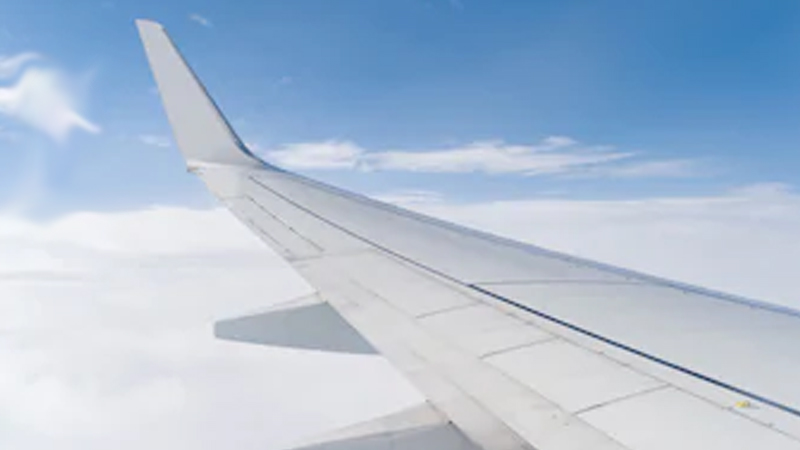IATA says relief critical for Middle East airlines recovery with 1.2 million people expected to lose jobs
AMMAN: The International Air Transport Association (IATA) renewed its call for government relief measures as COVID-19 crisis in the Middle East and North Africa region deepens with more than 1.2 million people projected to lose their jobs and billions in aviation revenue losses.
IATA said the region’s airlines could lose $24 billion of passenger revenue compared to 2019. That is $5 billion more than was expected at the beginning of the month. With full Full-year 2020 traffic expected to plummet by 51% compared to 2019.
Job losses in aviation and related industries could grow to 1.2 million. That is half of the region’s 2.4 million aviation-related employment. Previous estimate was 0.9 million. GDP supported by aviation in the region could fall by $66 billion from $130 billion. Previous estimate was $51 billion.
These estimates are based on a scenario of severe travel restrictions lasting for three months, with a gradual lifting of restrictions in domestic markets, followed by regional and intercontinental.
“Airlines in the Middle East continue to be battered by the impact of COVID-19. Passenger traffic has all but ground to a halt and revenue streams have evaporated. No amount of cost cutting will save airlines from a liquidity crisis. The collapse of air transport will have devastating effects on countries’ economies and jobs. And in a region where aviation is a key pillar of many nations’ economies the effect will be much worse. Direct financial support is essential to maintain jobs and ensure airlines can remain viable businesses,” said Muhammad Al Bakri, IATA’s Regional Vice President for Africa and the Middle East.
To minimize the broad damage that these losses would have across the Middle East economies, it is vital that governments step up their efforts to aid the industry. IATA is calling for a combination of: direct financial support, loans, loan guarantees and support for the corporate bond market and tax relief.
In addition to vital financial relief, the industry will also need careful planning and coordination to ensure that airlines are ready when the pandemic is contained.
IATA is scoping a comprehensive approach to re-starting the industry when governments and public health authorities allow. A series of virtual regional summits, bringing together governments and industry stakeholders are taking place this week. The main objectives will be:
- Understanding what is needed to re-open closed borders, and
- Agreeing solutions that can be operationalized and scaled efficiently
“As governments struggle to contain the COVID-19 pandemic, an economic catastrophe has unfolded. Re-starting aviation and opening borders will be critical to the eventual economic recovery. Airlines are eager to get back to business when and in a way that it is safe. But starting up will be complicated. We need to make sure that the system is ready, have a clear vision of what is needed for a safe travel experience, establish passenger confidence and find ways to restore demand. Cooperation and harmonization across borders will be essential to restart aviation,” said Al Bakri.
Some of the impacts at national level include:
- Saudi Arabia – 35 million fewer passengers resulting in a US $7.2 billion revenue loss, risking 287,500 jobs and US $17.9 billion in contribution to Saudi Arabia’s economy
- UAE – 31 million fewer passengers resulting in a US $6.8 billion revenue loss, risking 378,700 jobs and US $23.2 billion in contribution to UAE’s economy
- Egypt – 13 million fewer passengers resulting in a US $2.2 billion revenue loss, risking 279,800 jobs and US $3.3 billion in contribution to Egypt’s economy
- Morocco – 11 million fewer passengers resulting in a US $1.7 billion revenue loss, risking 499,000 jobs and US $4.9 billion in contribution to Morocco’s economy
- Iran – 7 million fewer passengers resulting in a US $1.8 billion revenue loss, risking 206,900 jobs and US $4.3 billion in contribution to Iran’s economy
- Kuwait – 2 million fewer passengers resulting in a US $1billion revenue loss, risking 24,100 jobs and US$1.6 billion in contribution to Kuwait’s economy
- Algeria – 8 million fewer passengers resulting in a US $0.8 billion revenue loss, risking 169,800 jobs and US $3.1 billion in contribution to Algeria’s economy
- Qatar – 8 million fewer passengers resulting in a US $1.7 billion revenue loss, risking 70,000 jobs and US $2.8 billion in contribution to Qatar’s economy
- Tunisia – 3 million fewer passengers resulting in a US $0.6 billion revenue loss, risking 92,700 jobs and US $1.2 billion in contribution to Tunisia’s economy
- Oman – 3 million fewer passengers resulting in a US $0.7 billion revenue loss, risking 51,500 jobs and US $1.7 billion in contribution to Oman’s economy


